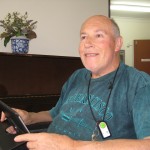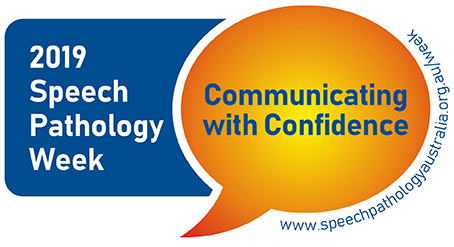There are 1.2 million Australians with communication disability. Speech pathologists support these Australians to go about each day communicating with confidence.
In Australia, communication disability is largely invisible. Unseen and out-of-sight.
Australians with communication disability cannot maximise future educational, health and social outcomes, without the intervention of a speech pathologist. Communicating with confidence is vital to enable everyone to participate fully in the social, educational, economic and sporting aspects of any community, including the Illawarra community.
That’s why during Speech Pathology Week, from 25-31 August 2019, speech pathologists around Australia are highlighting the week’s theme: Communicating with Confidence.
Only 38 per cent of Australians with communication disability are participating in the workforce compared with 80 per cent of people without communication disability.
Communication, by definition, involves at least two people. It is important that everyone understands that communication is more than speech.
Australians with communication difficulties communicate with others using a variety of means, including word-based or picture-based communication boards or books, sign and gesture, and spelling.
Technology is playing a growing and vital role in keeping Australians with communication difficulties engaged with their family, friends and those in the Illawarra.
Communicating with confidence: supported by technology
Assistive technology, such as electronic communication and speech generating devices, voice amplification and computer access aids (including eye-gaze mouse control and head tracking devices) allow people with communication difficulties to communicate with those around them.
Speech pathologists study, diagnose and treat communication disability, including difficulties with speech, language, reading and writing, stuttering and voice. They work with Australians who have communication disability that may:
Tips for successful communication*
- Always treat the person with the communication disability with dignity and respect
- Be welcoming and friendly
- Understand there are many ways to communicate
- Ask the person with the disability what will help with communication
- Avoid loud locations, find a quiet place
- Listen carefully
- When you don’t understand, let them know you are having difficulty understanding
- If you think the person has not understood, repeat what you have said or say it a different way
- Try asking the person yes or no questions if you are having difficulty understanding them
- Ask the person to repeat or try another approach if you don’t understand
- To make sure you are understood, check with the person that you have understood them correctly
- If you ask a question, wait for the person to reply
- Allow the person time to respond, so always be patient
- Speak directly to the person and make eye contact. (Though be mindful that there are some people who may not want you to look at them, e.g. some people with autism spectrum disorder)
- Speak normally. There is no need for you to raise your voice or slow your speech.
*Source: Adapted from SCOPE, Communication for All Booklet, http://www.scopeaust.org.au



